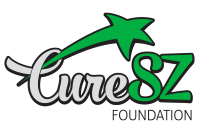
סטיבן ראש, MD
Associate Professor of Clinical Psychiatry, University of Cincinnati
Treatment Resistant Depression (Part Two of Two)
See Treatment Resistant Depression Part One
In the last article, we discussed what depression is and what treatments are typically used to treat depression. We also discussed Treatment Resistant Depression (TRD) and the challenges and burdens this illness presents for patients, clinicians, and communities. Depression that is treatment resistant, defined by the failure to respond to at least 2 trials of antidepressant medications, occurs in up to 30% of people. However, many patients classified as “treatment resistant” have had trials of multiple antidepressants and other medications, with limited positive effect on mood.
HOPE FOR RECOVERY:
There are several approaches to treatment of TRD when 2 or more antidepressant medications have not resulted in sufficient improvement.
One approach is the addition of a second medication that has been shown to increase response to an antidepressant, known as augmentation. FDA approved medications which can augment an antidepressant include Seroquel, Abilify, Vraylar and Rexulti, which are classified as “antipsychotic” medications though not used for that purpose here 1,2,3,4,.
In recent years there have been advances in treatments for depression including neuromodulation techniques such as Transcranial Magnetic Stimulation (TMS) as well as new medications such as esketamine. Another form of neuromodulation, electroconvulsive therapy, has been available for more than 50 years and has been demonstrated to be the most effective at treating depression, but is often avoided because of a history of pop-culture references that induce fear. The movie “One Flew Over the Cuckoo’s Nest” is the most famous of these5.
Transcranial Magnetic Stimulation is a noninvasive treatment that uses magnetic fields to induce an electric current, targeted at specific brain regions thought to be underactive in depression. To achieve this, an electric pulse generator is connected to a magnetic coil placed over the brain region known as the dorsolateral prefrontal cortex. When electromagnetic pulses are applied to this area at a high frequency (10 times per second), the activity in the DLPFC increases and, subsequently, results in increased activity in other brain regions thought to be involved in depression. Treatment is done 5 days per week, Monday through Friday, for 30-36 total treatments (6-7 weeks) with each treatment lasting from 4 to 45 minutes. The effects of TMS on depression are typically not seen until sometime after 20 treatments are completed, at week 4. The antidepressant effect of TMS is associated with increased brain activity, increased dopamine and serotonin transmission, and increased production of Brain Derived Neurotrophic Factor (BDNF) which is a protein vital for maintaining the health of neurons and neural pathways6. Recently, there has been an increased focus on the role of BDNF in depression. Studies show an association between low BDNF levels and higher severity of depression and, in response to TMS, increased BDNF levels and neuroplasticity (the ability of the brain to form and reorganize neural connection)7,8. TMS is not appropriate for people who have implanted or metallic devices such as aneurysm clips or coils and pacemakers. There are limited side effects that result from TMS treatment, including discomfort at the stimulation site and headaches. There is a known risk of seizures, though it is estimated that this side effect occurs in less than 1% of patients9.
Ketamine has long been used as an anesthetic agent that also has rapid-acting antidepressant effects. Ketamine can be administered through an IV, as an intramuscular injection and as an aerosolized nasal spray. Spravato, or esketamine, is a modified molecule derived from ketamine that was FDA approved for the treatment of treatment refractory depression and Major Depressive Disorder with acute suicidal ideation in 2019. This drug is self-administered by patients, under physician supervision, as a nasal spray. Both ketamine and Spravato are thought to have effects on at least 2 pathways in the brain: decreasing glutamate transmission at n-methyl-d-aspartate (NMDA) receptors and activating opioid receptors10. Dosing of this medication varies by patient and the antidepressant effect is usually seen within the first month, though may be dependent on continued dosing to sustain this response, done at frequencies that vary from weekly to monthly11. This treatment is generally well tolerated and side effects, including dissociation, alterations in heart rate and blood pressure, nausea, and sedation, typically resolve within 2 hours after administration12.
Electroconvulsive Therapy, or ECT, is a treatment where electricity is applied to the scalp with the intention of inducing a generalized seizure in the underlying brain regions. Patients receiving ECT are first sedated with general anesthesia and a muscle relaxant, the latter inhibiting convulsions so that seizure activity is only occurring in the brain while the body remains relaxed. Seizures last from 1 to 6 seconds and repeat treatments are typically done three times weekly for 6-12 treatments total over 2 to 4 weeks. For many patients, the effects of ECT are not sustained without maintenance treatment, which can be a single treatment done every 2-4 weeks after the initial 6-12 treatments. While the changes in the brain after ECT are not well understood, it is believed that seizure activity increases activity at serotonin receptors and increases the amounts of dopamine and norepinephrine available. ECT is more invasive than ketamine treatment or TMS, because of the risks associated with general anesthesia and cognitive impairments (memory, executive function, attention) which usually persist up to 6 months following the completion of treatment.
WHAT HAPPENS IN YOUR BRAIN
We are still trying to understand what is happening in the brain of those with treatment resistant depression. Studies suggest that patients with TRD are unique, in that they have markers of increased inflammation and immune dysregulation compared with patients without TRD. Like antidepressants in non-TRD, TRD treatments appear to increase neuroplasticity in ways that repair connectivity between neurons in brain regions important in the regulation of mood. Antidepressant medications are thought to work through modulation of monoamines, neurotransmitters derived from amino acids, including dopamine, serotonin, and norepinephrine, that regulate brain processes such as emotion, motivation, arousal, and cognition. While the treatments for TRD likely have some effect on monoamines, their primary mechanisms of action rely on interaction with pathways that are not affected by antidepressants.
GETTING BACK YOUR LIFE
Unfortunately, depression is often insufficiently treated until this brain disorder has resulted in significant and negative impacts on a person’s sense of self, ability to function and overall sense of wellness.
However, there is hope. As scientists and doctors better understand depressive disorders, including treatment resistant depression, a patient’s illness will be diagnosed as early as possible for the best possible outcome. From psychotherapy to medication to brain stimulation, many patients with TRD are getting their lives back and moving on with the things that they love. Today, there has never been as much hope as there is now for TRD.
- Seroquel XR (quetiapine ER) [package insert]. U.S. Food and Drug Administration website. https://www.accessdata.fda.gov/drugsatfda_docs/label/2020/022047Orig1s042lbl.pdf. Revised March 2020. Accessed August 20ה', 2024
- Otsuka Pharmaceutical Co. Abilify (aripiprazole) [package insert]. U.S. Food and Drug Administration website. https://www.accessdata.fda.gov/drugsatfda_docs/label/2016/021436s041%2C021713s032%2C021729s024%2C021866s026lbl.pdf. Revised August 2016. Accessed August 20ה', 2024.
- Actavis Pharmacy Inc. Vraylar (cariprazine) [package insert]. U.S. Food and Drug Administration website. https://www.accessdata.fda.gov/drugsatfda_docs/label/2015/204370lbl.pdf. Revised November 2015. Accessed August 20ה', 2024.
- Otsuka Pharmaceutical Co. Rexulti (brexiprazole) [package insert]. U.S. Food and Drug Administration website. https://www.accessdata.fda.gov/drugsatfda_docs/label/2021/205422s007lbl.pdf. Revised December 2021. Accessed August 20ה', 2024
- Cabrera, L. Y., Gilbert, M. M. C., McCright, A. M., Achtyes, E. D., & Bluhm, R. (2021). Beyond the Cuckoo’s Nest: Patient and Public Attitudes about Psychiatric Electroceutical Interventions. The Psychiatric quarterly, 92(4), 1425–1438. https://doi.org/10.1007/s11126-021-09916-9
- Chervyakov, A. V., Chernyavsky, A. Y., Sinitsyn, D. O., & Piradov, M. A. (2015). Possible Mechanisms Underlying the Therapeutic Effects of Transcranial Magnetic Stimulation. Frontiers in human neuroscience, 9, 303. https://doi.org/10.3389/fnhum.2015.00303
- Zanardini, R., Gazzoli, A., Ventriglia, M., Perez, J., Bignotti, S., Rossini, P. M., Gennarelli, M., & Bocchio-Chiavetto, L. (2006). Effect of repetitive transcranial magnetic stimulation on serum brain derived neurotrophic factor in drug resistant depressed patients. Journal of affective disorders, 91(1), 83–86. https://doi.org/10.1016/j.jad.2005.12.029
- Cavaleri, D., Moretti, F., Bartoccetti, A., Mauro, S., Crocamo, C., Carrà, G., & Bartoli, F. (2023). The role of BDNF in major depressive disorder, related clinical features, and antidepressant treatment: Insight from meta-analyses. Neuroscience and biobehavioral reviews, 149, 105159. https://doi.org/10.1016/j.neubiorev.2023.105159
- McClintock, S. M., Reti, I. M., Carpenter, L. L., McDonald, W. M., Dubin, M., Taylor, S. F., Cook, I. A., O’Reardon, J., Husain, M. M., Wall, C., Krystal, A. D., Sampson, S. M., Morales, O., Nelson, B. G., Latoussakis, V., George, M. S., Lisanby, S. H., National Network of Depression Centers rTMS Task Group, & American Psychiatric Association Council on Research Task Force on Novel Biomarkers and Treatments (2018). Consensus Recommendations for the Clinical Application of Repetitive Transcranial Magnetic Stimulation (rTMS) in the Treatment of Depression. The Journal of clinical psychiatry, 79(1), 16cs10905. https://doi.org/10.4088/JCP.16cs10905
- Schatzberg, A. F. (2021). Mechanisms of Action of Ketamine and Esketamine. American Journal of Psychiatry, 178(12), 1130–1130. https://doi.org/10.1176/appi.ajp.2021.21060653
- McIntyre, R. S., Rosenblat, J. D., Nemeroff, C. B., Sanacora, G., Murrough, J. W., Berk, M., Brietzke, E., Dodd, S., Gorwood, P., Ho, R., Iosifescu, D. V., Lopez Jaramillo, C., Kasper, S., Kratiuk, K., Lee, J. G., Lee, Y., Lui, L. M. W., Mansur, R. B., Papakostas, G. I., Subramaniapillai, M., … Stahl, S. (2021). Synthesizing the Evidence for Ketamine and Esketamine in Treatment-Resistant Depression: An International Expert Opinion on the Available Evidence and Implementation. The American journal of psychiatry, 178(5), 383–399. https://doi.org/10.1176/appi.ajp.2020.20081251
- Yang, S., Wang, J., Li, X., Wang, T., Xu, Z., Xu, X., Zhou, X., & Chen, G. (2022). Adverse Effects of Esketamine for the Treatment of Major Depression Disorder: Findings from Randomized Controlled Trials. The Psychiatric quarterly, 93(1), 81–95. https://doi.org/10.1007/s11126-020-09871-x
- Singh, A., & Kar, S. K. (2017). How Electroconvulsive Therapy Works?: Understanding the Neurobiological Mechanisms. Clinical psychopharmacology and neuroscience : the official scientific journal of the Korean College of Neuropsychopharmacology, 15(3), 210–221. https://doi.org/10.9758/cpn.2017.15.3.210

